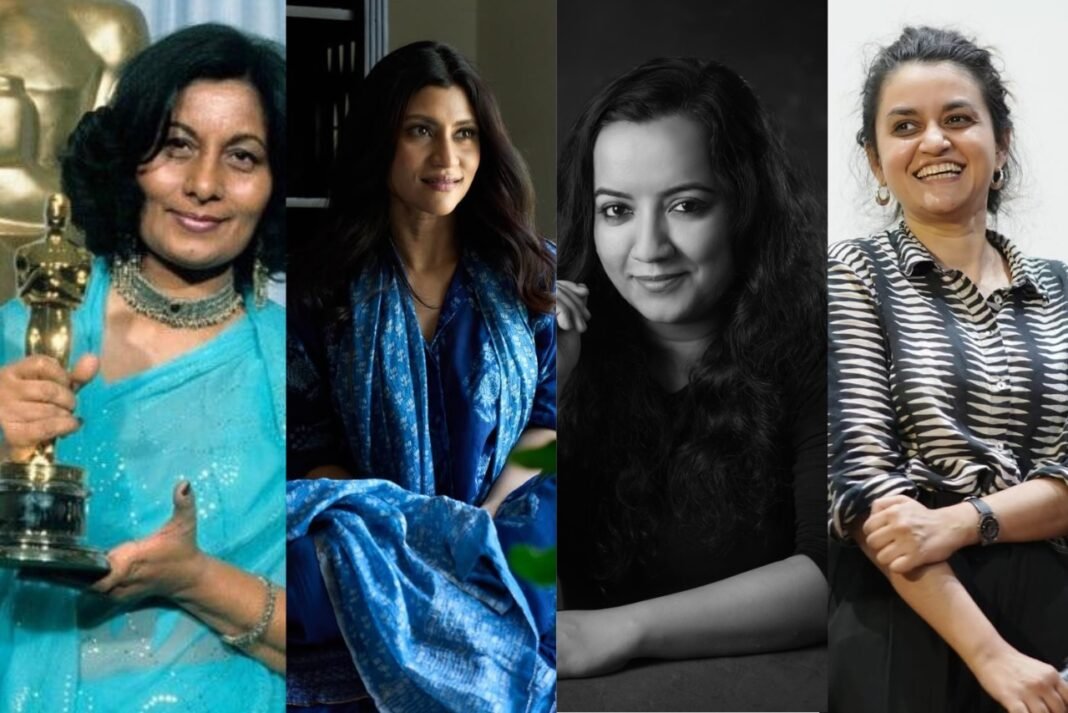In 2024, the need for a survey focusing on the role, involvement and inclusivity of women in one of the most celebrated sectors of entertainment must be assumed to be leaning towards the positive side right? While the O Womaniya! Survey of 2024 abides by their yearly survey of analysing the role of women in Indian entertainment results shows an unfortunate dip in several areas, especially in the South Indian Film Industry. This leads to several questions as to how there are several dips in the quantitative ratio of Men and Women and the factor leading up to the lack of women talents in the biggest entertainment sector of India.
After assessing more than 169 content pieces, while tackling stereotypes, breaking down clichés and building toolkits for more than a year, we are ready with OWomaniya!2024 Report.
— Film Companion Studios (@FilmCompanion) December 9, 2024
Our aim?
To identify the gaps, challenges and opportunities for creating a gender-balanced and… pic.twitter.com/fr1S552qeT
The survey also was made on the basis of how women are shown and involved on and off screen, importantly in the decision making positions. Apart from the already available data, this year O Womaniya! Have also added a tool kit that helps with a solution, a self questioning of sorts that is similar to the Bechdel Test which will be discussed further. For the analysis, Ormax Media – Amazon India and Film Companion Studios have taken 167 properties where the layout is from Hindi, Tamil, Telugu, Malayalam, Kannada and other equally skilled industries such as Marathi, Bengali, Punjabi, etc. The survey conducted cross platforms and streams such as Theatrical Films, Streaming Films and Streaming Series totaling up to 167 items.
Women in Decisive Roles
Cinema as a medium has reaped so much with the face value of women apart from their capabilities as a performer, actor, singer yet have somehow hesitated for the most parts behind the screens in provisioning the chances for women in powerful, structural positions.
These positions may include directors, producers, cinematographers, writers, editors and not just the usual costume designers or makeup. The startling statistics indicated a mere 3% growth from 2022 as female HODs are yet to be uplifted. Although these roles, especially that of being a cinematographer or a production designer, a director is physically toiling and contrast to the popular belief, women are quite capable of handling such parts successfully, evidently in the past.
One positive aspect is the visible growth percentage in the Editing department with 18% female occupancy which is a 8% leap from the previous year, making it a progressive department. Still the change on field in the roles of Production design, cinematography and direction narrates a sad story, one with lack of women in it. As rightfully pointed out by Stuti Ramachandra, the Director and Head of Production International Originals, Amazon Prime India, where she pointed out how two of the biggest international recognition for India in the International podiums came from two women directors – Kiran Rao and Payal Kapadia with exceptional stories and narration in their pockets and multiple feathers on their hat, both of them were received with warmth and accolades out of the nation while the larger sector in India lost their chance in celebrating these two. With Laapata Ladies and All We Imagine As Light, both Kiran Rao and Payal Kapadia have not only introduced themselves for the wider audience but have made a burning impact in showcasing strong, independent and self worthy women who are remarkable in their path, open and receiving in their journey.
Even as Producers, one of the year’s major turnover was for Kalki 2898 AD which was produced by Priyanka Dutt, Ashwini Dutt and Swapna Dutt who in making a visual spectacle that brought all the marvel for a sci- fi film. This also works with several examples yet lacks prominent change in the rest of the departments. The good side of the survey falls on the plateau of streaming sites as the number of female HoDs in Streaming films and series have hit 20 point percentage, just a little improvement of 3 to 5 percentage which is far better than that of the theatrical movies that are still crawling with 6% of female heads. The case falls even low for the South Indian industries where the retention of women in decision making roles are already low and even lower in Telugu and Kannada industries where the counts are scarce.
Bechdel Test and Significant Change
What is the Bechdel Test? It is an internationally utilised tool for measuring the representation of women in films. The test is passed when a movie has at least one scene where two prominent or named women characters have a talk with each other that doesn’t involve their significant others or partners or the male lead/ counterpart or any men in the film. Fortunately many of the Indian movies and series have passed the test and made a significant change in their content and in representing their female characters in a much poignant and genuine way.
It is no coincidence that all of us felt empowered and a revelation when Phool and Manju Mai had their conversations at the Railway station and how the latter batted some sense into the naive new bride. The reason this film and especially the screen grabs of these scenes were shared and spoke about a lot is also a reflection of how novel and uncommon it is for the Indian audience to see two women just having a transparent talk that is not linked or tied to the men in the movie. The idea almost seems alien in the South as the hero or the lead man holds the utmost face value, the center of attraction in movie posters, one who also has the most screen space in the movie. This stat is also much higher in movies and series with women in charge or commissioned in a decisive control, with just 52 items out if the 167 selected have passed the Bechdel Test.
This brings the conversation of how men are dominating what the survey calls ‘The Trailer Talks’, that is how often a ‘hero’ appears in the theatre trailers, commercials as a promotion factor. This staggering statistics has ripped off the mask of how the public perceive a movie and associate it with the actor, the ‘hero’ as they refer widely will be plastered out, keep on registered.
Streaming dominates Theatrical releases
Every condition of the survey is satisfied by the Streaming films and series which are more considerate and conscious about the way they represent women and in preferring them off screen. In terms of surpassing the Bechdel test and the O Womaniya Toolkit that comprises four questions like,
“Is there any point in the story where a female protagonist expresses a conflicting viewpoint to that of a male character, on an issue central to the plot? Or
Does the show/film portray sexualization of women, and/or violence against women, as normal/acceptable?”
These questions received many positive responses from the streaming sites where the content is much progressive, much inclusive and sensitive in portraying their female characters. This is also possible for the reasons such as there is no fixed set of audience or any bracketed reception intended such as cheers and uproar for an item song or a thrill of action and mass punch dialogues for the hero every 10 – 15 minutes to make the audience not complain about the value for their ticket.
Lack of Women Representation in South India
Although the already existing big divide between the north and south Indian counterparts are now mingling into one under ‘Pan India’ the South Indian representation and involvement is lagging far behind than the Northern languages. Just like the rest of the survey, the inclusion of women in HoDs in the South, where Kannada and Tamil with 25 and 24 percent respectively while the others lag behind.
While there are several immensely talented female artists on screen who are yet to get their career breaking roles and being chosen for something different other than being an arm candy, there is a severe lack of women correspondents in off camera roles. While there are other factors in play, the recent light shown in the form of Hema Committee Report in the Kerala Cinema Industry becomes an important factor that prevails the involvement of Women in South, which may not be a common reason, it shows up to be a major one from outside.
Malayalam Actor Siddique Procured the Anticipatory Bail Ahead of his Ongoing CaseAlthough many movies and stories are prioritizing women as a strong and independent person, there are not enough changes in the way they are perceived as a whole. This is due to the lack of women writers, directors and technicians who are involved in creating such roles, especially in south movie industries. Movies like Laapataa Ladies, Stree 2, All we imagine as light are exceptional and well received because of the outstanding writing and execution. This was the state of South Indian cinema back in the 90s and 80s where there was equal importance for women characters who were not merely taking up spaces as house wives or doing the house chores in the backdrop but actively had a loud voice at least in nudging the plot ahead. While the survey reflect a disappointing result, there are hopes for vocalisation for women in the coming years.





